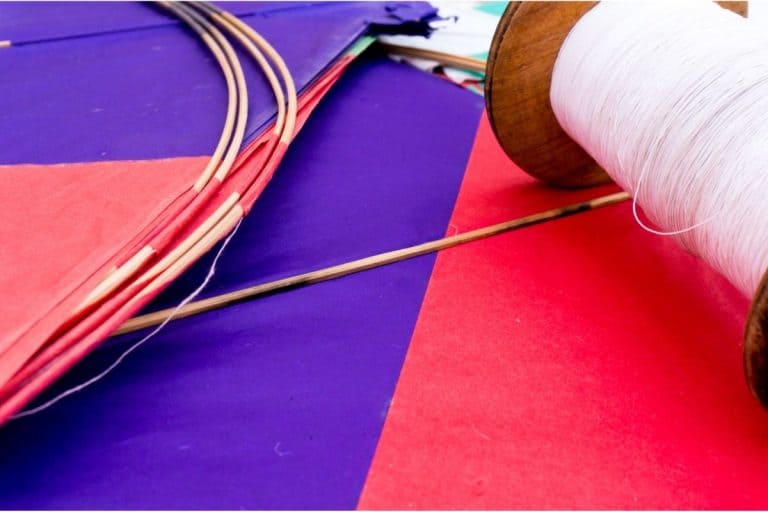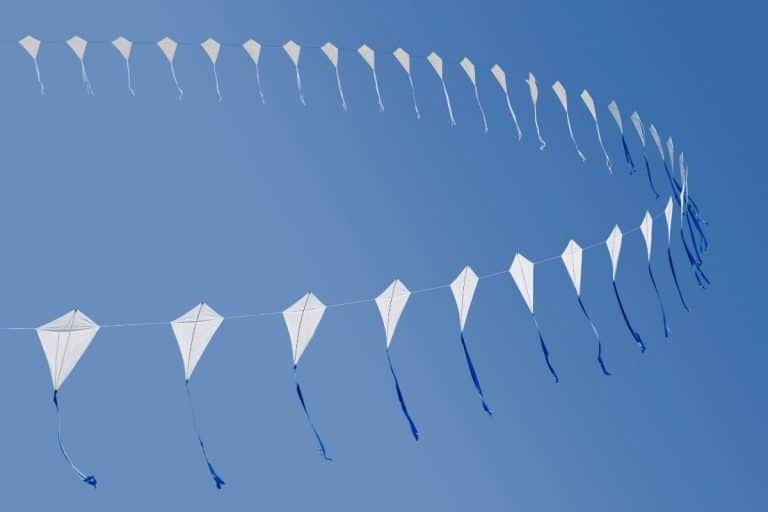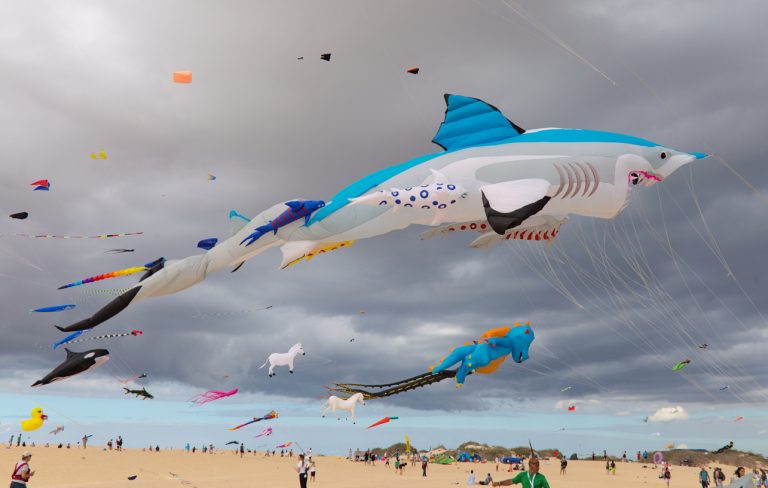9 Tips To Kite Care
Kite flying is a fun recreational activity for all ages. It has been a well-loved activity since its earliest written account in 200 BC. Today, thousands of kite flyers and kite enthusiasts strive to bring the joys of kite flying to people worldwide. But how do you take care of kites? Kite maintenance is essential to making sure your kite lasts for years, so keep on reading to find out how you can take proper care of your kite.
To take care of a kite, conduct a preflight check on all its parts before flying, avoid exposure to high temperatures to protect the fabric and other components, and fly in an area away from obstructions to prevent it from getting stuck on trees or poles.
To really enjoy the fun of kite flying, you first need to make sure your kite is in its best condition. So, if you’re an aspiring kite flyer or a kite enthusiast looking for tips on how to take care of your kite, then this article on some valuable information on proper kite maintenance will be worth the read.
How Do You Take Care Of A Kite? Here are 9 Easy Tips To Kite Care
1. Make It A Habit To Do Preflight Checks
Before flying a kite, doing a thorough inspection on all its parts, making sure the assembly is adequately completed in the right places is of utmost importance. You need to ensure that the frame is intact with no severe damage and that the bridle and lines are suitable for flying. (source)
Flying a kite in its best condition can really make a difference in your kite flying experience, so always remember to check your kite first and ensure no damages. If your kite does show some wear, you can either postpone the activity for the meantime, especially if the damage is too severe for a DIY repair or do a quick remedy using a kite repair kit if you have one available.
2. Avoid Exposing Your Kite To High Temperatures
Exposure to high temperatures and the sun’s harmful ultraviolet rays can do lasting damage to a kite, especially on its fabric and plastic parts. In order to take care of your kite, it is crucial to keep it away from direct sunlight when not in use for long periods, such as while outdoors.
It’s also never a good idea to store or put your kite in hot car trunks or at the back of a truck where it is exposed to sunlight to avoid melting the kite’s plastic fittings and damaging the fabric and spars. (source)
3. Keep Sand Or Dirt Off Your Kite
When bringing your kite to the beach or an area with lots of loose dirt around, it is essential to check if any sand or dirt got stuck in the kite’s fittings or bridles, and make sure that you dust any particle off afterward. Removing sand or dirt off your kite is an excellent way to prevent wearing the bridles and fittings. (source)
In order to safely remove any sand or dirt stuck in the kite’s fittings, using compressed air is ideal. Gently rinsing your kite with fresh water or cold water, especially after a session at the beach, can prevent wearing down rubber fittings, which are constantly exposed to saltwater, and can reduce the kite’s overall performance. (source)
When taking proper care of your kite, it is essential to remember that using solvents to clean the kite’s fabric can dissolve the adhesive in the seams and remove the kite’s protective coating. It is why you should consider not using solvents when cleaning your kite. (source)
4. Fly Your Kite In A Safe Area
Flying a kite in a vast and safe area away from obstructions is a must when talking about proper kite care and safety. Electric poles, wire fences, trees, etc., are risk hazards when kite flying. Suppose you’re flying a kite in an area with lots of nearby obstructions.
In that case, it’s very likely for kites to get stuck in them, increasing the chances of damaging the kite and putting you and other people in the area at risk of possible injuries. (source)
Kite lines conduct electricity, so it’s also never a good idea to fly near overhead power lines, especially while it’s raining outside. On this note, it’s vital to ensure that your kite’s lines are kept dry and not made of wire or metallic lines. (source)
5. Avoid Storing Your Kite While It’s Wet
Taking proper care of your kite also entails ensuring that if it is wet, you need to let it dry completely and avoid storing it in a bag right away to prevent molding, which can cause severe damage to the kite’s fabric.
If it’s not possible to dry the kite at your flying location, let it air dry when you get home, either by hanging it on a laundry line or placing it in the garage. When drying the kite outdoors, it’s also good to avoid laying it on grass because the kite can absorb dew or moisture, which might decrease the kite’s overall quality and performance. (source)
6. Do Routine Post-Flight Inspections
Check your kite for worn areas, frayed bridles, popped stitches, and other issues after flying. Doing a post-flight check on your kite is just as crucial as preflight inspections to ensure that your kite is still in good condition.
Flying your kite again even when it is damaged might cause you a lot of expensive repairs in the future, so post-flight inspections are a must for taking care of your kite. (source)
Additionally, while winding or unwinding your lines for storage, constantly inspect them for snags, abrasions, or any damage.
Flying your kite with a broken line might do significant damage to your kite and put you at risk of harm or injury, which is why it’s essential to make sure your flying lines aren’t stretched unevenly. (source)
7. Be Familiar With Simple Kite Repairs
Minor damages to your kite are inevitable, especially if you often go flying, which is why it would be an excellent idea to make you are familiar with some basic kite repairs. No matter how well you take care of your kite, wear and tear in the form of broken lines are common, so in case of a broken line, a quick DIY remedy using appropriate knots will last your kite a few more flights before you eventually need to replace it with a brand new line. (source)
8. Be Well-Versed In Kite Safety
Before you even go out and start flying, you have to be familiar with kite safety first. Knowing how to fly your kite safely will ensure that you can take care of your kite and yourself and other people around.
Anchors are fit to a kite as safety measures, so always make sure that the anchors are strong and secure enough to hold your kite. Avoid attaching sharp, pointed, rigid, or heavy objects to the kite or kite line because carelessly doing so is a significant safety hazard for your kite and other kites flying around.
Lastly, if your kite gets stuck on a tree or pole, do not attempt to throw rocks or climb up to retrieve it and instead allow the kite to fly itself free. (source)
9. Store Your Kite Properly
After a fun day flying your kite, you need to store it properly so that it lasts long enough to give you years-worth of flights in the future. As mentioned, kites face high chances of damage when exposed to extreme temperatures or moisture, so knowing where and how to store your kite is essential for proper kite care.
Kite Storage – Where And Why
Because kites generally cannot withstand constant or prolonged exposure to moisture and high temperatures, proper storage will ensure that your kite will not deteriorate faster than it should. Ripstop nylon is a lightweight nylon fabric that is the material commonly used for kites, sails, and other outdoor gear.
However, nylon as a material generally is not the best for wet or hot environments, so it’s ideal for storing kites made of ripstop nylon or having nylon lines in a cool, dry area away from direct sunlight. (source)
Properly folding your kite and putting it in a bag, preferably the bag it came with or a dedicated kite bag, are also good ways to avoid sunlight and moisture. However, it’s effortless to snag the kite’s fabric on the zipper when you’re carelessly stuffing it in the bag.
To take care of your kite, fold it properly and run your hand alongside the kite inside as you zip up the bag to ensure that the kite does not get snagged or jammed in the zipper. (source)
Kite Care Summary
Proper kite care is pretty straightforward. It would be best if you remembered to avoid exposing your kite to moisture or high temperatures for long periods. Always do preflight and post-flight inspections on your kite, familiarize yourself with basic kite repairs and kite safety, and of course, store your kite correctly in a cool, dry area. Kites are not indestructible, but taking proper care of your kite will definitely allow you to enjoy the fun of kite flying for years to come.





